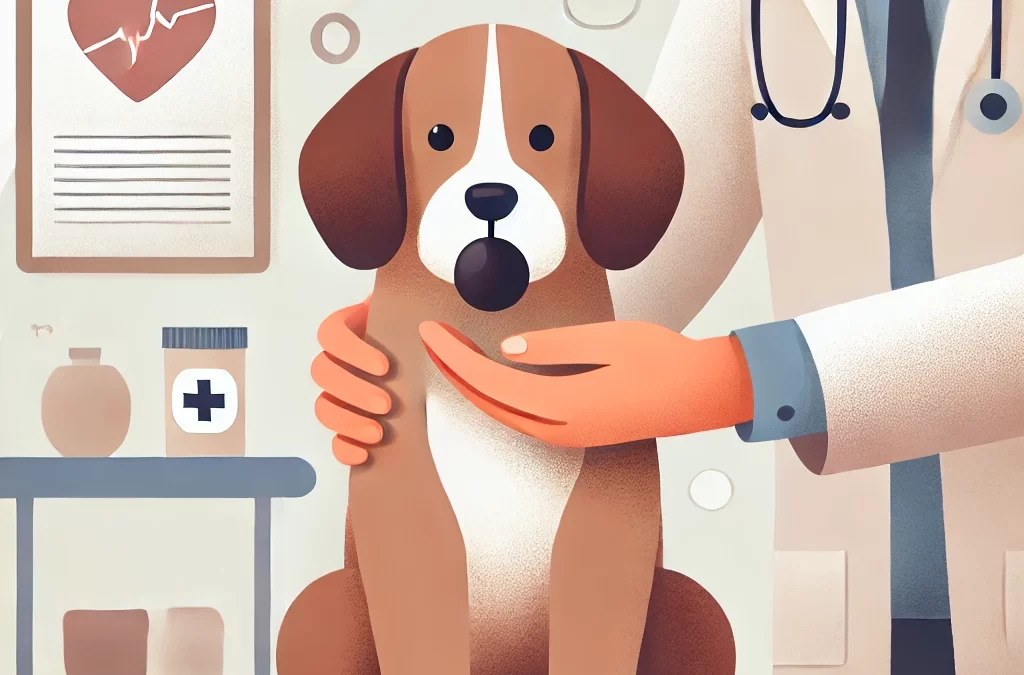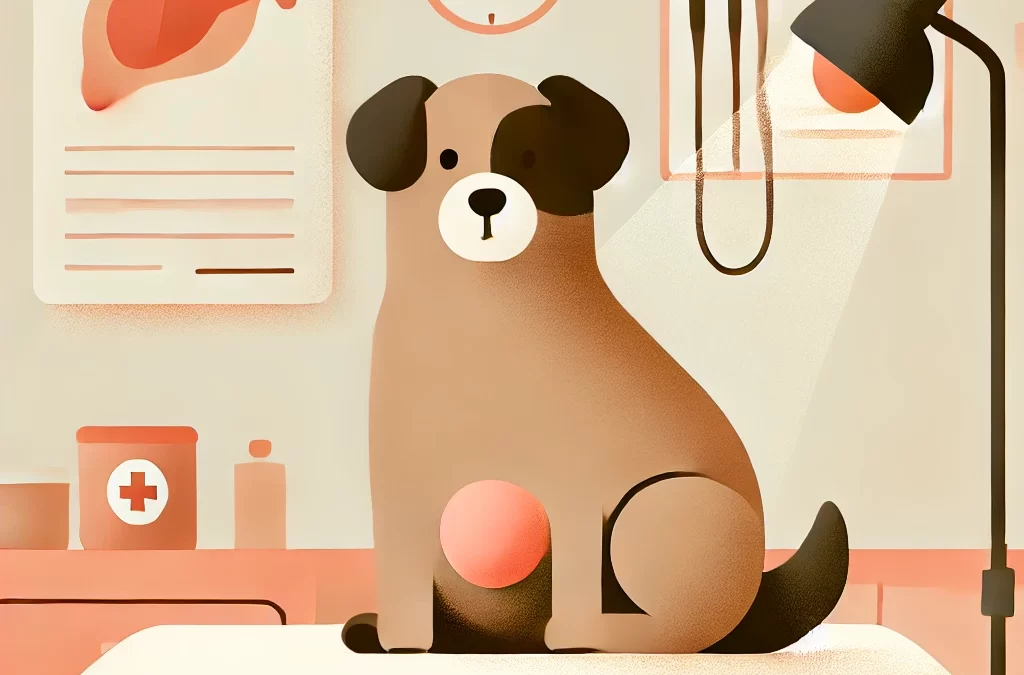
經過 TCMVET | 2024 年 12 月 20 日 | 狗癌症和腫瘤
狗的癌症長期以來一直是寵物主人關注的話題。雖然面對這種診斷時感到不知所措是很自然的,但了解原因可以為預防和護理提供見解。本文深入探討了狗狗罹患癌症的潛在原因,並揭示了遺傳、環境和生活方式因素。
遺傳傾向:沉默的驅動力
狗狗患癌症的主要原因之一是遺傳。由於遺傳特徵,某些品種更容易患癌症。例如,眾所周知,金毛獵犬、拳師犬和羅威納犬患淋巴瘤和骨肉瘤等癌症的可能性較高。這種遺傳傾向凸顯了負責任的育種實踐對於最大限度地降低風險的重要性。
環境毒素:看不見的威脅
狗狗經常接觸環境毒素,而主人卻沒有意識到。殺蟲劑、除草劑、二手煙,甚至家用清潔產品都可能導致癌症的發生。長期接觸這些有害物質會引發細胞突變,最終導致腫瘤生長。
飲食與肥胖:增加風險
缺乏必需營養素或大量加工食品的不良飲食會削弱狗的免疫系統,使它們更容易患癌症。肥胖會在體內產生發炎環境,使問題更加複雜。保持富含抗氧化劑的均衡飲食並避免過量餵食可以顯著降低風險。
老化:自然因素
隨著狗年齡的增長,它們的細胞會受到磨損,從而增加患癌症的可能性。年長的狗通常會經歷免疫功能下降,這使得異常細胞不受控制地增殖。這使得定期獸醫檢查對於早期發現和介入至關重要。
過度接種疫苗和醫療因素
一些研究表明,過度接種疫苗或不必要的醫療程序可能會增加癌症風險。雖然疫苗對於預防疾病至關重要,但過度或不合時宜的疫苗接種可能會對狗的免疫系統造成壓力。請務必諮詢值得信賴的獸醫,以製定適合您的狗的需求的疫苗接種計劃。
陽光照射和紫外線損傷
對於淺色皮毛或薄毛的狗來說,過度日曬會導致皮膚癌,特別是在色素沉著很少的區域。使用寵物安全的防曬霜來保護您的狗或在陽光高峰時段限制戶外活動會有所幫助。
如何最大限度地降低風險
- 均衡營養: 提供適合您的狗的年齡、品種和活動水平的高品質飲食。包括天然來源的抗氧化劑,如藍莓和胡蘿蔔。
- 限制毒素暴露: 使用對寵物安全的清潔產品,並避免讓您的狗接觸殺蟲劑或菸草煙霧。
- 規律運動: 透過定期的體育活動保持健康的體重。
- 常規獸醫就診: 安排年度檢查和篩檢,以便及早發現潛在的健康問題。
- 量身訂做的疫苗接種計畫: 與您的獸醫合作制定適合您的狗的生活方式和健康狀況的疫苗接種計劃。
結束語
狗的癌症是一種複雜的疾病,受遺傳、環境和生活方式因素的綜合影響。雖然不可能消除所有風險,但採取積極主動的措施可以顯著降低罹癌的可能性。透過保持資訊靈通和細心,寵物主人可以為他們的毛茸茸的同伴提供最好的照顧和生活品質。

經過 TCMVET | 2024 年 12 月 18 日 | 狗癌症和腫瘤
淋巴瘤是狗最常見的癌症之一,雖然通常可以透過化療等治療來控制,但到了一定程度,儘管採取乾預措施,疾病仍可能進展。認識到您的狗即將結束旅程的跡象可以幫助您提供安慰並就其護理做出明智的決定。這是一本了解晚期淋巴瘤症狀以及如何在這段困難時期支持您心愛的寵物的指南。
了解犬淋巴瘤
淋巴瘤影響淋巴系統,淋巴系統是免疫系統的一部分。它可以出現在身體的不同部位,包括淋巴結、脾臟、肝臟和胃腸道。疾病的進展各不相同,但隨著病情的進展,身體會越來越受到損害,導致顯著的身體和行為變化。
您的狗可能死於淋巴瘤的跡象
嚴重疲勞和嗜睡
患有晚期淋巴瘤的狗經常表現出極度疲倦。您曾經活躍的寵物可能一天中的大部分時間都在睡覺或躺著,對它們以前喜歡的活動表現出很少的興趣。
呼吸困難
胸部淋巴瘤會導致肺部周圍積液,使您的狗呼吸困難。症狀包括呼吸急促、呼吸淺或費力。
食慾不振
垂死的狗可能會拒絕進食或飲水,這表明它們的身體正在停止運作。即使是他們最喜歡的食物也可能不會受到影響。
體重減輕和肌肉萎縮
隨著疾病的進展,體重明顯減輕和肌肉萎縮(惡病質)變得明顯。狗的肋骨和脊椎可能會變得更加明顯。
淋巴結腫大
雖然淋巴結腫大是淋巴瘤的標誌性症狀,但隨著疾病接近最後階段,淋巴結腫大可能會急劇增大。
嘔吐和腹瀉
如果淋巴瘤影響胃腸道,您的狗可能會出現慢性嘔吐、腹瀉或兩者兼而有之。這些症狀會導致脫水並進一步削弱身體。
疼痛和不適
您的狗可能會表現出疼痛的跡象,例如嗚咽、躺下困難或不願意移動。疼痛可能是由器官損傷、發炎或腫瘤引起的壓力引起的。
行為改變
當狗接近生命的盡頭時,它們通常會變得孤僻。他們可能會避免互動、尋求獨處或顯得迷失方向。
在此期間如何支持您的狗
請諮詢您的獸醫,以確保您的狗接受足夠的疼痛管理和安寧療護。抗噁心藥、食慾興奮劑和止痛藥等藥物可以提高狗狗的舒適度。
創造一個安靜祥和的環境,讓您的狗可以不受干擾地休息。提供柔軟的床上用品並將他們喜歡的物品放在附近。
如果您的狗願意吃,請提供少量易消化的食物。水分也很重要,但不要強迫他們喝水。
與您的寵物共度美好時光,給予您溫柔的關懷與安慰。在場可以為您和您的狗提供巨大的舒適感。
如果您的狗的生活品質顯著下降,請考慮人道安樂死。雖然這是一個艱難的決定,但這可能是減輕他們痛苦的一種富有同情心的方式。
結論
認識到您的狗可能死於淋巴瘤的跡象可以讓您專注於它們的舒適和健康。每隻狗的旅程都是獨一無二的,您在這段時間的愛和關懷將為它們的最後幾天帶來有意義的改變。

經過 TCMVET | 2024 年 12 月 18 日 | 狗癌症和腫瘤
簡介:犬癌症照護中沉默的敵人
癌症惡病質是一種複雜的代謝綜合徵,其特徵是體重嚴重減輕和肌肉萎縮,是一種無聲但致命的疾病,影響著許多患有癌症的狗。惡病質常被原發疾病所掩蓋,它會顯著影響受影響寵物的生活品質、治療反應和整體存活率。了解和解決這種情況對於狗的整體癌症護理至關重要。
What is Cancer Cachexia?
癌症惡病質不僅僅是體重減輕。這是一種多因素疾病,由全身性發炎、代謝失調和腫瘤代謝需求的相互作用所驅動。主要特點包括:
- 肌肉質量損失:與簡單的飢餓不同,惡病質會導致肌肉流失,僅透過增加熱量攝取無法逆轉。
- Appetite Changes:狗可能表現出對食物的興趣降低(厭食症)或口味偏好改變。
- 全身炎症:腫瘤引起的發炎加劇代謝失衡,使病情進一步惡化。
為什麼狗狗會出現癌症惡病質?
癌症惡病質的確切機制很複雜,並且根據癌症的類型和階段而變化。造成這種情況的因素包括:
- Tumor Metabolism:某些腫瘤會分泌幹擾正常代謝過程的物質,導致肌肉和脂肪分解。
- 細胞激素和荷爾蒙:促發炎細胞因子(例如 TNF-α)水平升高和荷爾蒙失衡在導致惡病質中發揮關鍵作用。
- 營養缺乏:食物攝取量減少和營養吸收受損會使狗的狀況惡化。
辨識狗狗的癌症惡病質
早期發現是控制癌症惡病質的關鍵。尋找這些跡象:
- 儘管攝取足夠的食物卻出現不明原因的體重減輕
- 肌肉萎縮,尤其是脊椎和後腿周圍
- 疲勞和活動量減少
- 食慾或飲食行為改變
創新管理策略
雖然沒有一刀切的解決方案,但多模式方法可以幫助控制狗的惡病質。以下是一些新興策略:
- 客製化營養支持:富含優質蛋白質、omega-3 脂肪酸和谷氨酰胺等特定氨基酸的飲食有助於維持肌肉質量。
- Appetite Stimulants:米氮平或卡普莫瑞林等藥物可能會改善食慾和食物攝取。
- Anti-Inflammatory Therapies:Omega-3 補充劑和針對發炎途徑的藥物可以降低細胞激素活性。
- 代謝調節劑:對阿拉莫林和生長素釋放肽模擬物等藥物的研究顯示出逆轉肌肉萎縮的希望。
中西醫結合的作用
傳統中醫 (TCM) 等自然療法已顯示出緩解症狀的潛力。黃耆和人參等草藥可以支持免疫功能和能量水平,而針灸可以改善食慾並減少發炎。
展望未來:需要進一步研究
儘管取得了進展,但獸醫學領域對癌症惡病質的研究仍不足。獸醫、研究人員和寵物主人之間的合作對於開發新療法和改善受影響狗的治療結果至關重要。
結論:創新帶來希望
雖然癌症惡病質帶來了重大挑戰,但理解和管理這種疾病的進步帶來了希望。透過全面、積極主動的方法,我們可以改善與癌症作鬥爭的狗狗的生活質量,並幫助它們有尊嚴和舒適地享受黃金歲月。

經過 TCMVET | 2024 年 12 月 16 日 | 狗癌症和腫瘤
狗的口腔惡性黑色素瘤(OMM)是個隱形的敵人。這種疾病以其攻擊性和快速傳播而聞名,這種診斷讓寵物主人感到恐懼。但 OMM 不僅僅是一種醫療狀況,它還呼籲寵物父母採取行動,保持警惕、創新和全面護理。讓我們以全新的視角深入探討這個具有挑戰性的主題,探索科學和希望。
什麼是口腔惡性黑色素瘤?
口腔惡性黑色素瘤是一種起源於黑色素細胞的癌症,黑色素細胞負責皮膚和黏膜中色素的產生。雖然它最常見於口腔,但這種癌症不止於此。它因其侵入附近組織並轉移至肺部和淋巴結等遠處器官的能力而臭名昭著。
這種情況在中年至老年犬中最為普遍,尤其是牙齦顏色深的品種,如可卡犬、鬆獅犬和蘇格蘭梗犬。儘管名聲不佳,但了解 OMM 的跡象和治療方案可以幫助業主做出明智的決定。
認識跡象
口腔惡性黑色素瘤在進展之前通常不會被注意到,因此定期口腔檢查至關重要。常見的跡象包括:
- 口腔、牙齦或嘴唇中出現黑色或不規則腫塊。
- 出血、口臭或流口水。
- 進食、咀嚼或吞嚥困難。
- 臉部腫脹或淋巴結腫大。
如果您發現任何這些症狀,請立即諮詢您的獸醫。早期發現可以顯著影響結果。
超越傳統治療:擁抱創新
OMM 的常規治療包括手術、放射治療和化療。雖然在許多情況下有效,但這些選擇並不總是可用或負擔得起。以下是一些引起關注的創新和綜合方法:
- 免疫治療疫苗: OMM 特異性疫苗(如犬黑色素瘤疫苗 (ONCEPT®))是腫瘤學領域的遊戲規則改變者,可刺激狗的免疫系統對抗癌細胞。這種尖端治療方法在延長存活時間方面顯示出了希望。
- 光動力療法(PDT): 該技術使用光激活藥物選擇性地破壞癌細胞,而不傷害周圍的健康組織。對於某些情況來說,這是一個侵入性較小的選擇。
- 整體補充: 人們正在探索薑黃素(存在於薑黃中)、藥用蘑菇和 omega-3 脂肪酸等天然補充劑的抗發炎和增強免疫力特性。在加入補充劑之前一定要諮詢獸醫。
飲食在康復中的作用
癌症診斷需要改變飲食策略。與 OMM 作鬥爭的狗受益於適合其代謝需求的飲食。重點關注:
- 優質蛋白質: 瘦肉和魚可以維持肌肉量。
- 健康脂肪: Omega-3 脂肪酸可對抗發炎並支持整體健康。
- 低碳水化合物選擇: 癌細胞靠糖而茁壯成長;限制碳水化合物可以幫助減緩它們的生長。
經獸醫批准的自製膳食是確保您的狗獲得最佳營養的好方法。
為寵物父母提供情感和實際支持
照顧患有 OMM 的狗既需要情感上的要求,又充滿挑戰。以下是如何引導這趟旅程:
- 制定日常護理程序: 建立一致性可以幫助減輕您和您的狗的壓力。
- 尋求社區支持: 為患有犬癌症的寵物主人提供線上論壇和當地支持小組,可以提供安慰和有價值的見解。
- 探索安寧療護選擇: 如果無法進行治癒性治療,請專注於疼痛管理和改善狗狗的生活品質。
希望的一瞥
雖然狗的口腔惡性黑色素瘤是一個可怕的敵人,但獸醫學和綜合護理的進步正在改變這種說法。早期發現、創新治療和對整體健康的關注使寵物父母能夠對抗這種疾病。
你的狗的診斷並不能定義你的旅程——它只是他們的堅韌、愛和你們所分享的紐帶故事中的一個章節。不斷提出問題,尋求解決方案,珍惜每一刻。

經過 TCMVET | 2024 年 12 月 16 日 | 狗癌症和腫瘤
發現狗狗肚子上有腫塊可能會令人震驚。身為寵物主人,我們的第一本能往往是擔心,但並非所有腫塊都是危險的。事實上,許多都是良性的,透過適當的照護是可以控制的。為了幫助您應對這種情況,這裡有一個關於理解、識別和解決狗胃腫塊的新觀點。
胃腫塊到底是什麼?
狗的胃腫塊是指腹部區域的任何異常腫塊或腫脹。它們的大小、形狀和質地各不相同,有些感覺柔軟且可移動,而有些則可能堅硬或附著在下面的組織上。
處理此類腫塊的關鍵在於觀察並及時採取行動。在下結論之前,讓我們先探討一下這些成長背後最常見的原因。
胃腫塊的常見原因
- 脂肪瘤(脂肪瘤): 這些是良性、柔軟且生長緩慢的腫塊,常見於老年犬。脂肪瘤很少構成健康風險,通常更多的是美容問題。
- 血腫或膿腫: 如果您的狗最近經歷過外傷,腫塊可能是血腫(皮膚下的血液聚集)或感染引起的膿腫。這些通常摸起來溫暖而柔軟。
- 疝氣: 當內部組織或器官穿過腹壁的薄弱點時,就會發生疝氣。輕輕按壓時,它們可能會感覺柔軟並縮小。
- 惡性腫瘤: 不幸的是,有些腫塊是癌性的。肥大細胞瘤、軟組織肉瘤和其他惡性腫瘤通常需要及時的獸醫關注和治療。
- 囊腫或皮脂腺增生: 這些通常是充滿液體的囊或阻塞的腺體,可能出現在狗的胃上。它們通常是無害的,但如果它們長得太大,可能需要引流或進行小手術。
需要立即註意的跡象
雖然並非所有胃腫塊都值得關注,但某些症狀表明需要緊急就診:
- 腫塊迅速變大。
- 當觸摸該區域時,您的狗會表現出疼痛。
- 腫塊堅硬、不可移動或形狀不規則。
- 該區域出現發紅、腫脹或分泌物。
- 你的狗表現出嗜睡、食慾不振或其他系統問題的跡象。
如果發現腫塊該怎麼辦
- 監測腫塊: 追蹤它的大小、紋理和行為。每隔幾天拍張照片可以幫助您記錄任何變化。
- 安排獸醫就診: 您的獸醫可以進行體檢,並可能建議進行診斷測試,例如細針抽吸、活檢或超音波檢查,以確定腫塊的性質。
- 考慮治療方案: 根據診斷結果,您的獸醫可能會建議觀察、藥物、手術或其他療法。對於脂肪瘤等良性生長,除非腫塊引起不適,否則可能不需要治療。
- 探索自然療法(經獸醫批准): 對於非惡性生長,一些寵物主人轉向天然補充劑,如薑黃、omega-3 脂肪酸或促進整體免疫健康的草藥療法。在引入任何新的補充劑之前,請務必諮詢您的獸醫。
健康狗狗的預防技巧
- 定期檢查: 早期發現是有效控制腫塊的關鍵。定期拜訪獸醫,確保及時解決任何變化。
- 均衡飲食: 營養豐富的飲食可以支持您的狗的整體健康和免疫力。
- 保持健康的體重: 肥胖會增加脂肪瘤和其他健康問題的風險。讓您的狗保持活躍並保持理想的體重。
- 皮膚護理: 定期梳理和檢查狗狗的皮毛和皮膚可以幫助您及早發現異常。
一句安慰的話
並非每個腫塊都會危及生命,獸醫學的進步使診斷和治療比以往任何時候都更有效。透過保持觀察和積極主動,您可以確保您的狗保持快樂和健康。
如果您發現胃部腫塊,請深呼吸並聯絡您的獸醫。你們將一起為你們的毛茸茸的伙伴找到最佳的前進道路。
標籤: 狗胃腫塊, 狗腫塊的原因, 狗腫塊治療, 狗保健, 狗良性腫瘤, 狗的自然療法





